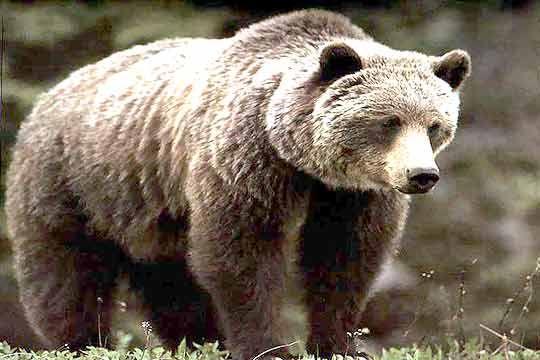The Ministry of Environment and Water works to reduce the prerequisites for conflict between bears and humans
22 May, 2025 | 15:22
- For the first time in Bulgaria, a project for DNA monitoring of the brown bear is being implemented
The brown bear (Ursus arctos) is a species with the highest protection in Bulgaria and in Europe. According to the EU Directive on the Conservation of Natural Habitats and of Wild Flora and Fauna, the brown bear species is under strict protection. This requirement was introduced in Bulgaria by listing the species in Annex No. 3 of the Biodiversity Act in 2002. The Ministry of Environment and Water (MOEW) monitors the strict compliance with the legislation, combining the protection and management of the species with the needs of people who live and work in its habitats.
To prevent the consequences of a possible conflict between bears and local communities, since 2007 the MOEW has been implementing a mechanism for reporting, establishing, and paying for damages caused by brown bears to domestic animals and apiaries. The harmed farmers must file a report with the nearest mayorality or state forestry on the day the damage is discovered or on the first working day after the attack. It is important to establish that the damage was caused by a brown bear, therefore the traces at the site of the attack must not be erased and the situation must not be changed in any way. Rules have been established for determining the damage, according to which the presence of damage by the protected species, its scale and the amount of compensation are established by a commission that includes a representative of the Regional Inspectorate for Environment and Water (RIEW) or the National Park Directorate (NPD) on whose territory the damage occurred, the State Forestry/Hunting Enterprise and the harmed person. The person filing the complaint must have a document of ownership and registration of the damaged property. It is established whether all possible preventive measures for protection have been taken in accordance with the Agricultural Property Protection Act. The damage is paid at published market prices.
Effective conservation and management of the brown bear should be carried out on the basis of correct data on its population size. For this purpose, the implementation of a DNA monitoring project for brown bears is underway. Such a project is being implemented for the first time in Bulgaria. It will be implemented jointly with the Executive Environment Agency (EEA), forestry enterprises, and national parks. DNA studies will be carried out in Slovenia, in one of the best laboratories for such research. Samples will be collected from excrement. The project is funded under the Environment Programme 2021-2027. The DNA method is the most modern way to monitor and establish the number of a given species. The project will be implemented within two years, and representatives of the EEA and forestry enterprises are currently undergoing training in Slovenia on the methods of collecting samples, storing them, and submitting data. In order to ensure completeness of the data, the samples will be collected this year from the entire territory of the country and sent for analysis and processing. The results will support the conservation and effective management of the species.
The Regional Inspectorate for Environment and Water and the National Park Service are assisting local authorities in bear population areas to take measures to reduce damage to animals and apiaries jointly with forestry and hunting associations, non-governmental nature conservation organizations, and representatives of local communities. Most often, damage is observed in areas where animals and people share habitats. These are sheepfolds high in the mountains, small high-altitude villages that are completely or partially depopulated, etc. Over the past three years, the Ministry of Environment and Water has provided funds to the relevant regional inspectorates for the purchase of electric fences, which have been provided to some of the owners of properties in bear habitat areas.
In areas with a larger number of bears, such as the Rhodope Mountains, a special rapid response group has also been formed, which responds to signals of damages caused and assists local people. The group is made up of local residents, veterinarians who are trained in identifying damages and possible measures to be taken. It has been working in the Rhodope Mountains for more than 10 years.
Greater activity of bears is observed in the spring, because after the end of hibernation, the animals are hungry and looking for food. It is possible that this year there will be a more limited amount of food for the animals, because the beginning of spring was cold.
The Ministry of Environment and Water calls for taking security measures when raising domestic animals and beehives in the territories of the brown bear. First of all, garbage dumps as a source of “easy food” create a potential danger for direct contact of bears with humans and unwanted incidents. A bear that gets used to eating leftovers of human food cannot be weaned from this habit. The garbage dump must be fenced in such a way as to prevent animals from accessing and feeding on the waste. The most effective method is fencing with an electric fence (electroshepherd). The advantages of electric fences are that they are easier and faster to build compared to ordinary fences made of wood, iron, or wire. They can be used in remote areas, far from roads and settlements, and prevent uncontrolled movement of animals. Feeding small bears, especially near settlements, is also dangerous. They get used to humans, stop being afraid of them and no longer avoid them, and begin to associate their smell with easy food. In this way, you inadvertently create problematic bears that will inevitably cause damage.
